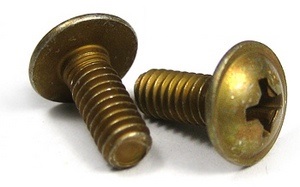Click Bond Floating Nutplate Kit
MFR Model# KA4A1CB2009A3CR
- JUMP TO
- Overview
- Reviews
- Q&A
- View in Catalog
Overview
|
Click Bond Fasteners mount to surfaces with adhesive. They are assembled in a disposable, self-fixturing device of plastic that aligns and holds the fastener in position and under controlled pressure while the bonding material cures. After the installation is completed, the holding fixture is removed and the conventional attachment is made to the fastener. Bonded fasteners eliminate welding or drilling surfaces and result in reinforced substrate strength, leakproof and corrosion resistant attachments. We offer Click Bond Fasteners in convenient, pre-packaged kits as shown.
The Click Bond adhesive bonded floating nutplate has a metal base and is installed using a disposable, elastomeric fixture that temporarily holds the nutplate in place and under pressure while the adhesive cures. The fixture prevents fouling of the clearance hole. No additional tools are needed for making the nutplate attachment. This fastener meets or exceeds the standards set by MIL-N-25027 for push-out, torque-out, and cycle life. Bonded nutplates eliminate composite damaging rivets, reinforce the structure, and reduce installation time. The kit includes four CB2009A3S floating nutplates (10-32) with aluminum baseplate, one adhesive packet, surface preparation materials, & instructions. |
Reviews
Just dont, nut plates to tight, stripped the fasteners and then came unglued removing them. Would not recommend.
Click Bond Kit B Floating Nutplate
I love these adhesive nut plates. This are the best product but the cost is out of sight. This kit includes about $10 worth of adhesive and that leaves four nut plates for more than $12 each. My homebuilt aircraft floor has 100 nut plates to hold inspection covers and seat rails. That would be over $1200 in nut plates for that assembly alone. I think these would be attractive for the average homebuilder if the price were more reasonable.
I have been using these nut plates extensively for many years. they are very good in situations where you would like to have a locking nut but dont want a nut on the back, however, they do wear out, and there is the issue of them occasionally popping off. I have done my own testing, and for goodness sakes if someone tells you they do not require any abrading on the back before being glued, challenge them. because the fact is they are over 36% stronger if you abrade the back with 40 grit sand paper and wipe with IPA prior to installation. I would also reccomend using CB394, not CB200 adhesive as it is far more resilient, however if you are using it on composites and you may need to remove them, use CB200 and then you can freeze it with freeze spray and knock them off with a chisel, while not damaging the composite (try it on something other than your airplane first!) overall a grea tproduct and leaves a nice clean look.
Q&A
Please note, Aircraft Spruce Australia's personnel are not certified aircraft mechanics and can only provide general support and ideas, which should not be relied upon or implemented in lieu of consulting an A&P or other qualified technician. Aircraft Spruce Australia assumes no responsibility or liability for any issue or problem which may arise from any repair, modification or other work done from this knowledge base. Any product eligibility information provided here is based on general application guides and we recommend always referring to your specific aircraft parts manual, the parts manufacturer or consulting with a qualified mechanic.
If X is referring to Length and Y is referring to width. This would be .796" L x .489" W. Yes, we can special order the 8-32 screw size nutplates for you. Please contact our sales department for current pricing and lead time.
Ok, thank you for the information. We will post it for other customers to view.

 Aircraft Spruce Australia
Aircraft Spruce Australia






























